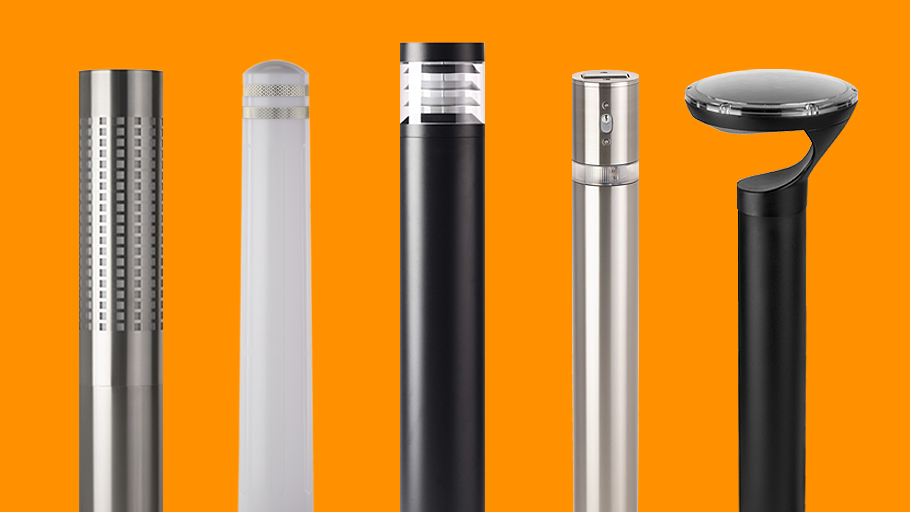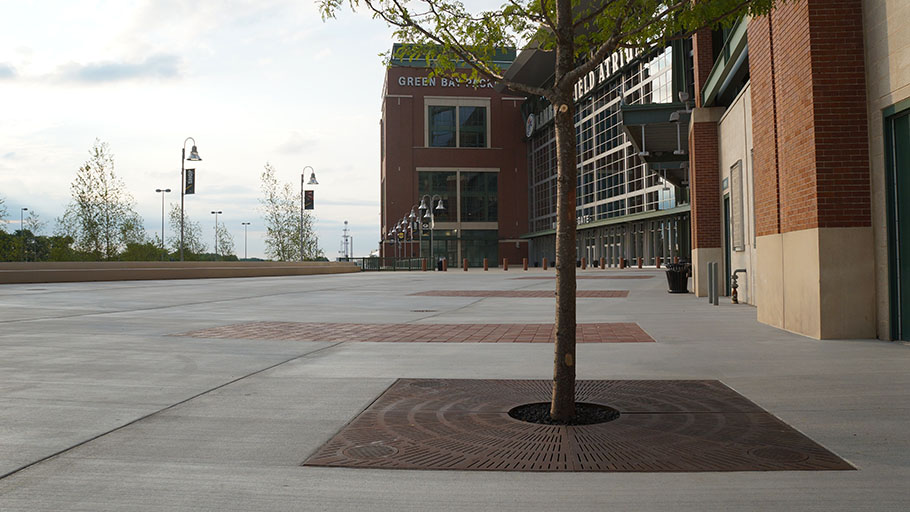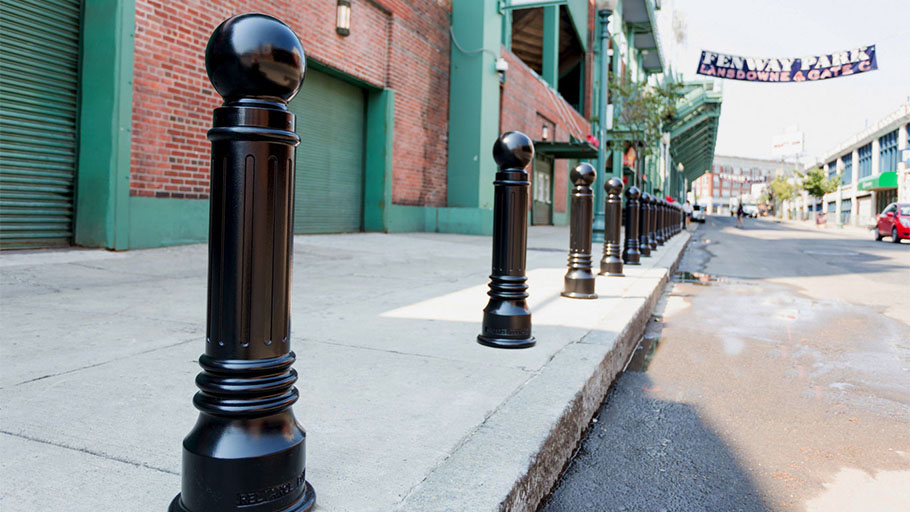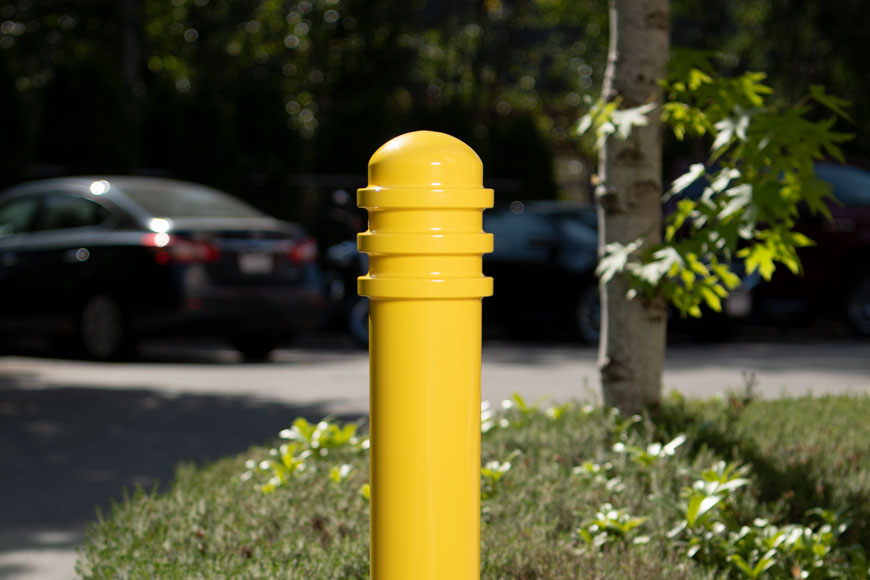Considerations for purchasing, installing and maintaining site furnishings
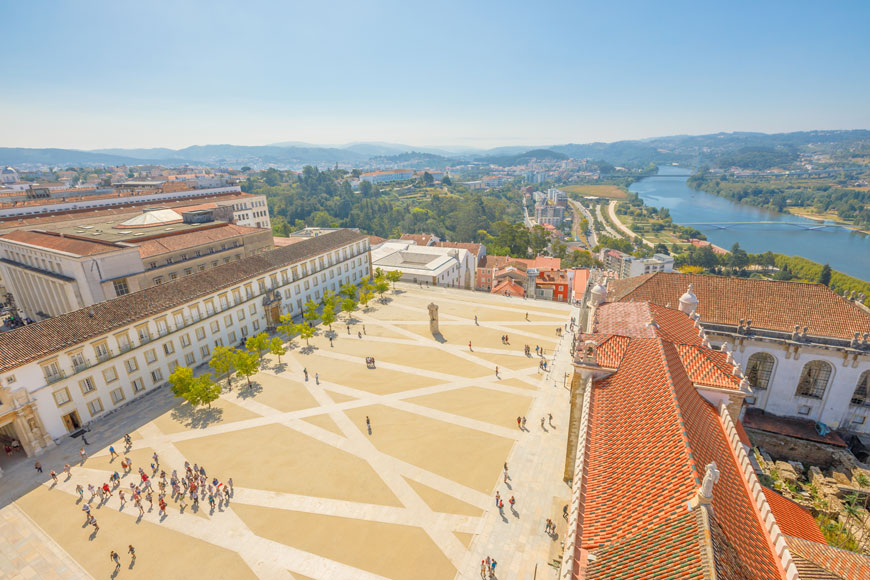
Curb appeal is not just an important concept for residential home owners. Good property management practices for site furnishings will both welcome users and signal expectations. Well maintained, well-furnished areas draw people in, enhancing civic trust and community development. An engaged community helps to lower the cost associated with vandalism and misuse. When considering the purchase and upkeep of new landscape furniture, property managers or site planners should consider several variables.
Planning for present and future need
A well-worn cliché suggests a site’s value is based on “location, location, location.” A location’s desirability is often dependent on how easily people can get to it. Popular locations are often on transportation hubs. A good site plan, therefore, needs to be forward-thinking on how people are to move to and through the space.
An open courtyard in a site plan provides a place for people to gather by offering a wide space to set up a stage, market, or festival—but if it is near other amenities, it might serve as overflow parking. Therefore, building variable access into the site design can allow an area to adapt as needed. Removable bollards allow for this access: a space can be transformed into parking or provide entry to food trucks in on festival days, while turning traffic away at other times. Or perhaps only emergency vehicles will ever need entry: flexible bollards that snap back unharmed after being driven over are a great solution.
On the other hand, if the space is near arterial traffic and fast-moving vehicles, protecting users from vehicle accident may be more of a priority. Permanent obstacles to traffic, like security bollards, low walls, lamp standards, and trees might be placed near highways, preventing all vehicle access.
Site furnishings can also include bike racks or lockers which can be used to block vehicles and provide a transportation option. When picking bike parking, it’s helpful to account for the needs of current riders, as well as plan for increase in the future. Providing more spaces than presently needed can encourage new cyclists and decrease vehicle congestion.
Usage pattern and overall design
Landscape architects have often used “Desire Paths” to place pedestrian walkways through open landscape. Such paths are created by people walking from point to point, leaving a record of both the direction and volume of traffic in the erosion of dirt, grass or snow along the route. When picking landscape points for amenities, landscapers can use these desire paths to place objects at opportune places: a garbage can beside a desire path near a café, for example. Introduction of new, big landscape elements like a fountain, benches, or bike parking may create new desire paths. If this is undesirable, careful consideration of current volumes may lead the landscaper to pick an underused spot on a current path to place a new attraction.

Aesthetics and invitation
Landscape and architecture go together like succulents and adobe tile. History is captured in architecture. Regional building materials also create style, and their use or absence influence how people perceive a setting. From English halls with landscape gardens, to modern experimental concrete design joining building to surroundings, site furnishings can be an accent or an unobtrusive element, depending on the creative vision.
If these aesthetic factors aren’t considered, it can have an unintended effect. When site furnishings and other landscape elements do not complement each other or the architecture of surrounding buildings, it can make a property seem unkempt, even if all the elements were recently updated. People are attracted to coherent design.
Installation method
Will site furnishings go into new cement, or do they have to bolt onto finished concrete? Installation methods and requirements are a required consideration. Subsurface utilities and ground composition determine what installation methods are possible below grade. Foot traffic, vehicle traffic, intended safety use, and the likelihood of vandalism will determine how secure the installation must be.
Factors in costing and quotes
Volume discounts
One of the ways to keep costs down is to negotiate volume discounts with a supplier! For property managers buying for more than one site, a piggybacked order means that larger sites provide volume discounts to smaller ones. It may be a good idea to consider all projects within a company for quoting at the same time.
Offered warranties
Evaluating and tracking offered warranties can make quality control and maintenance simpler. Especially in the first years under the warranty period, careful inspection at least twice a year is a way to get in front of problems that might arise in the longer term. This inspection can be figured into site maintenance budgets.
Value over time
How much maintenance will your site fixtures need over time to keep looking good?
Upkeep of materials and finishes should be considered when evaluating the cost of a site furnishing. In extreme climates, preparing a custom finish to deal with the weather might mean longer lag before delivery and a small increase in expense, yet save a lot of money over the years. Similarly, in high vandalism areas, graffiti-resilient powder coating may be the best choice.
Materials are also a consideration, especially with a view to the future.
Well-constructed stone monuments often survive geological eras! Limestone and marble can be pitted by acid rains, but granite and other stone types are used for monuments intended to preserve history because of their durability. The drawbacks to stone are that it can splinter under vehicle impact, is weighty to move, and is expensive: if amortizing over thousands of years, the value is clear, but most property managers are worried about the shorter term. Instead of stone, most modern builders use concrete to create similar look without the expense. Concrete can be fronted with aggregate, to provide the look of traditional stone, or left raw.
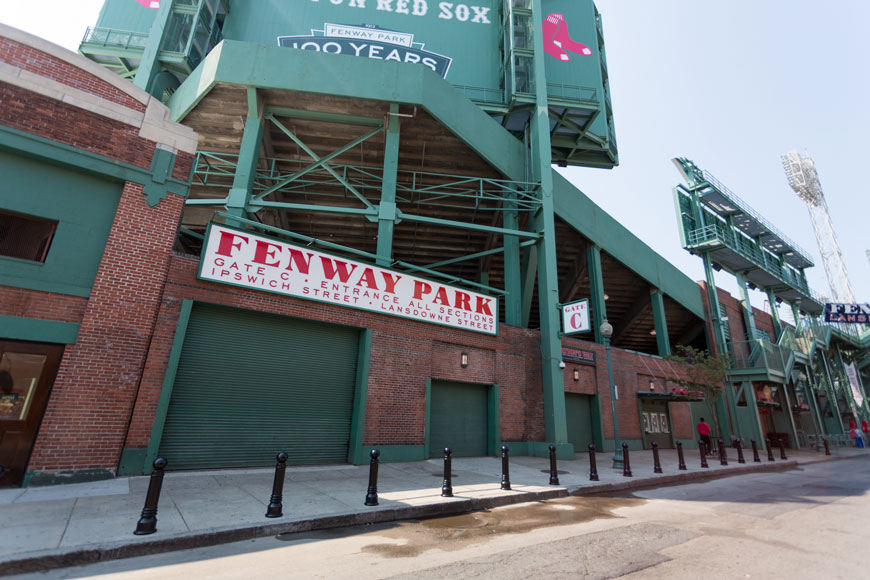
Heavy, well finished cast iron or steel also are long-term solutions. Cast iron will survive centuries with proper care and upkeep, in most environments. Cities, large organizations like universities, and businesses planning long legacies can rely on long life and value—but cast iron can be relocated without issue should designs change. For marine environments or where de-icing chemicals are regularly used, corrosion-resistant 316 stainless steel might be a better way to go, given its resilience to rusting even in chemically reactive situations.
Shorter time frames bring in other materials for consideration. When choosing wood for outdoor furnishings, attention should be paid to what types of woods and finishes weather well over time. In nature, trees break down and feed the saplings around them, as well as provide habitat for bugs and birds. Finding trees that break down more slowly, and then finishing them to help prevent rot and infestation, can provide decades of use of a site furnishing.
Plastic also weathers over decades, eventually bleaching or staining in sun and with water. However, structural integrity is usually good for a long time. Plastic structures are often inexpensive enough to provide flexibility in changing styles and are easy to replace in shorter time frames. Plastic covers can also be used as a “finish” to protect wood or metal structures.
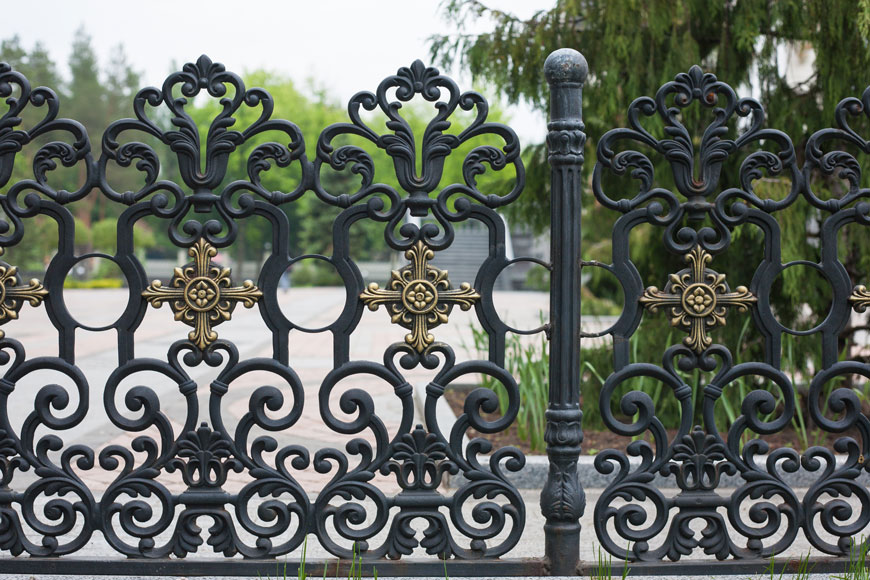
Maintenance
Maintaining site furnishings means inspection after severe weather events, repair after damage or accident, and yearly plans for inspection and upkeep.
Maintaining wood objects
Wood wicks water, and so one way to help preserve wood furnishings is to make sure that they are capped or sealed at contact points with the ground.
Some wood is pre-treated for outdoor use and can be installed and left to silver and age in the sun. In other cases, using paint or a stain-and-varnish combination will preserve wood’s shine outdoors. Making sure the wood is dry before repainting or re-varnishing, and then following recommended steps like sanding and priming, will keep wood in top shape for decades.
Maintaining powder-coating on metal
Powder-coat is made of resins and pigments applied in an even, unbroken layer with electrostatic charge and then thermally sealed onto an object. Although it has some similarities to paint, the lack of solvents and manner of application mean that powder-coat is less likely to chip or have pinhole gaps in surface coverage. For this reason, the requirements for maintenance are quite low!
Powder-coated site furnishings can get dirty, however, and lose their luster with time and weather. It is good to check the stability and shine of powder coated site furnishings after major storms and each spring. To keep powder coat looking fresh, only a few simple rules are needed:
- Clean by wiping or with a hose. Do not pressure wash.
- Do not use abrasives or chemicals. A wet rag is usually enough.
- If the item is losing luster, wax can be applied.
- Never paint powder-coat.
- If something damages the coat but not the item, it can be re-coated by a professional shop.
Maintaining stainless steel
- Stainless is rugged and durable if well kept.
- Remove most surface dirt with a soft cloth, along the grain of the steel.
- In harsh environments this can help prevent pitting.
- Use nonabrasive, stainless steel specific cleaners when needed.
- Stainless steel polishes are available to return luster to shinier grades of steel.
Maintaining paint on metal
Outdoor iron will quickly begin to rust, and as with wood, paint is often used to protect iron against breakdown. However, unlike wood, if water and air break through the paint seal on an iron object, the iron can quickly begin to flake, taking paint with it. The “rot” of iron can therefore move much more quickly than the rot into wood. To maintain paint, especially on iron:
- Inspect for chips or cracks in spring and fall.
- Well-primed, high-quality paints may last about six years, if no chipping or cracking.
- Exterior paints undergo “chalking,” a chemical change that happens in sun and oxygen, in which a chalk like breakdown appears on the surface.
- In case of chalking or mildew, pressure wash between 1500 and 2000 psi.
- As with other finishes, abrasives can scratch the finish.
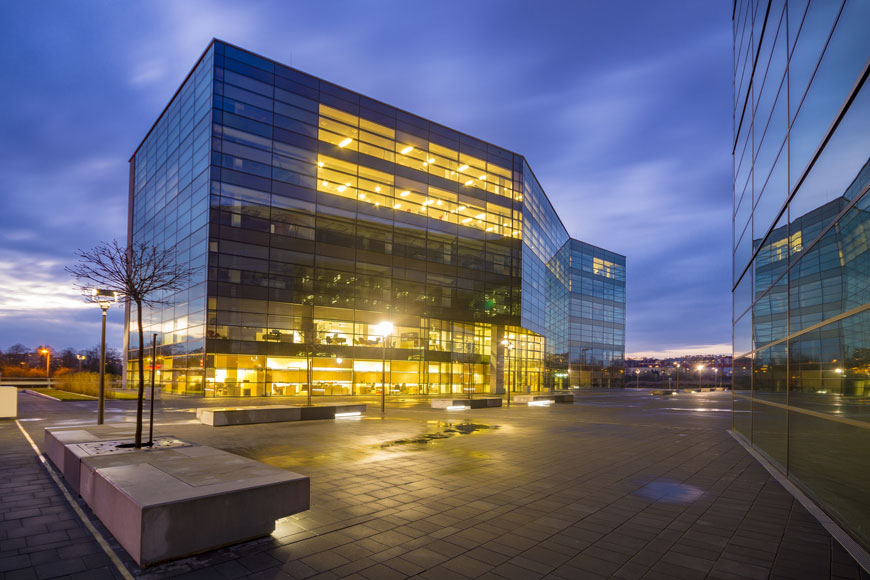
Moving forward with site specification and purchasing
Property managers work on projects of wildly different scope depending on what sort of organization they work for. One might oversee a strip-mall and be considering steel-and-pipe traffic safety posts for the parking lot. The question on their mind might be whether to use plastic post covers or paint. Another might be creating a monument at a university with a special bequest. Yet many of the same considerations underscore both projects, however different they may look.
A robust plan for either project will consider area usage patterns now and in future; environment and aesthetics; climate; material wear over time; volume discounts for one project or across an organization; warranties on the products purchased; and maintenance budgets. Depending on the site, these may not be onerous considerations—but each is something to consider when putting together a site plan or project. When these things have been considered, purchasing can go forward and site furnishings placed with confidence.

